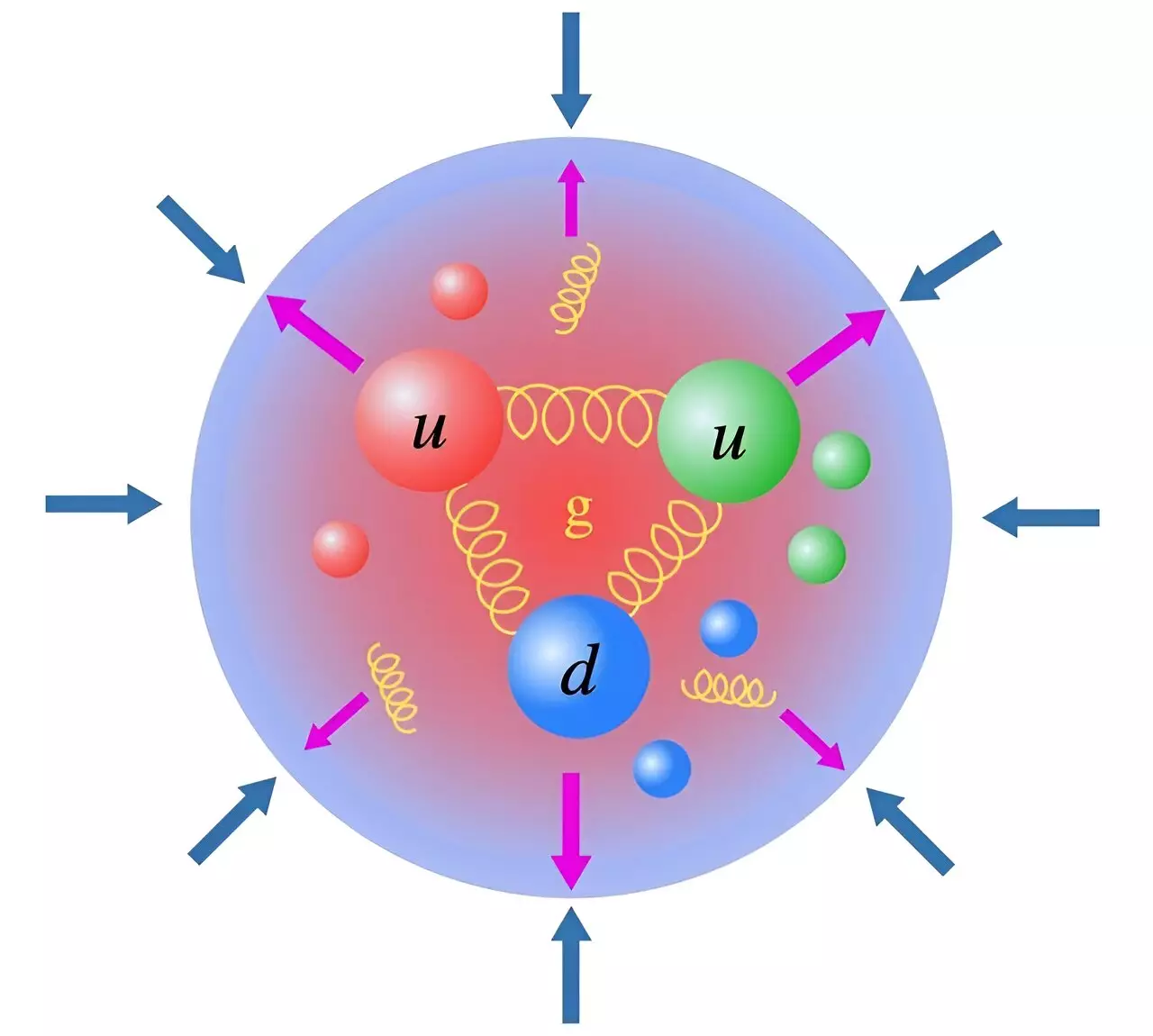Quantum chromodynamics (QCD) serves as the foundational framework for exploring the intricate forces that exist within atomic nuclei and their subatomic components – protons and neutrons. A key aspect of QCD research revolves around the confinement of quarks and gluons within these nucleons. Contrary to the traditional comparison of these forces to gravity, the emergence of quantum effects, such as the “trace anomaly,” introduces a unique complexity to the dynamics within nucleons. These quantum phenomena play a pivotal role in maintaining the delicate equilibrium between the internal pressure and cohesive forces that bind nucleons together.
Recent advancements in QCD research have shed light on the trace anomaly, a phenomenon that can be effectively quantified through the production of charmonium. This subatomic particle, generated at prestigious research facilities like the Thomas Jefferson National Laboratory and the upcoming Electron Ion Collider, offers a tangible means of measuring the trace anomaly. Moreover, theoretical calculations rooted in QCD principles provide a complementary avenue for assessing the intricacies of this quantum effect. The insightful findings of these investigations have been documented in the esteemed journal Physics Letters B.
By harmonizing experimental observations with theoretical predictions of the trace anomaly, researchers can glean profound insights into the distribution of mass and pressure within hadrons – composite particles composed of quarks and gluons. The confinement of particles within a defined volume, akin to the framework employed in superconductors, mirrors the mathematical underpinnings that describe energy and pressure distribution attributed to phenomena such as the cosmological constant and dark energy in the context of cosmic expansion and acceleration.
The synergy between experimental measurements and lattice QCD calculations enables a direct exploration of the dynamics inherent to quantum chromodynamics. By experimentally quantifying the trace anomaly and computationally assessing its implications within the QCD framework, researchers can delve deeper into the underlying mechanisms that govern the behavior of quarks and gluons within nucleons. These collaborative efforts underscore the interconnected nature of energy, pressure, and confinement across varied physical systems, bridging the realms of microscopic particle interactions to cosmic-scale phenomena. Through a unified comprehension of these diverse phenomena, a deeper appreciation of the fundamental principles governing the universe emerges.


Leave a Reply